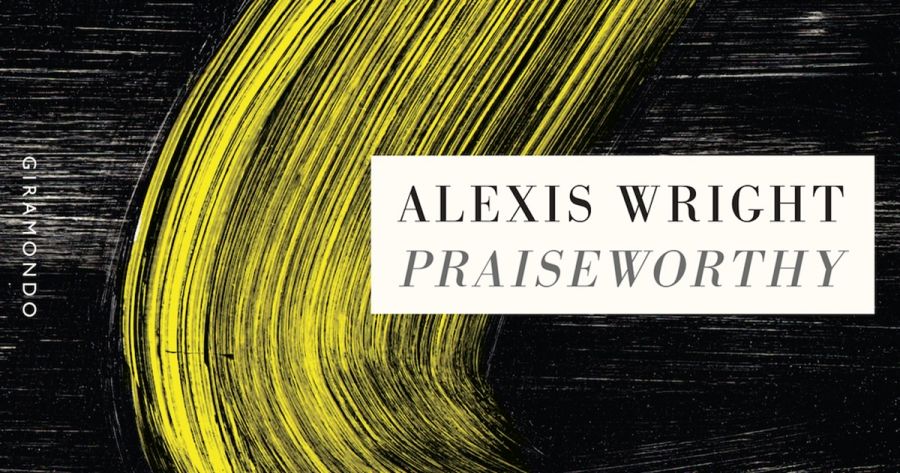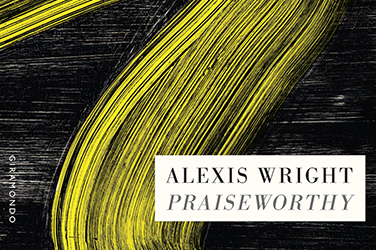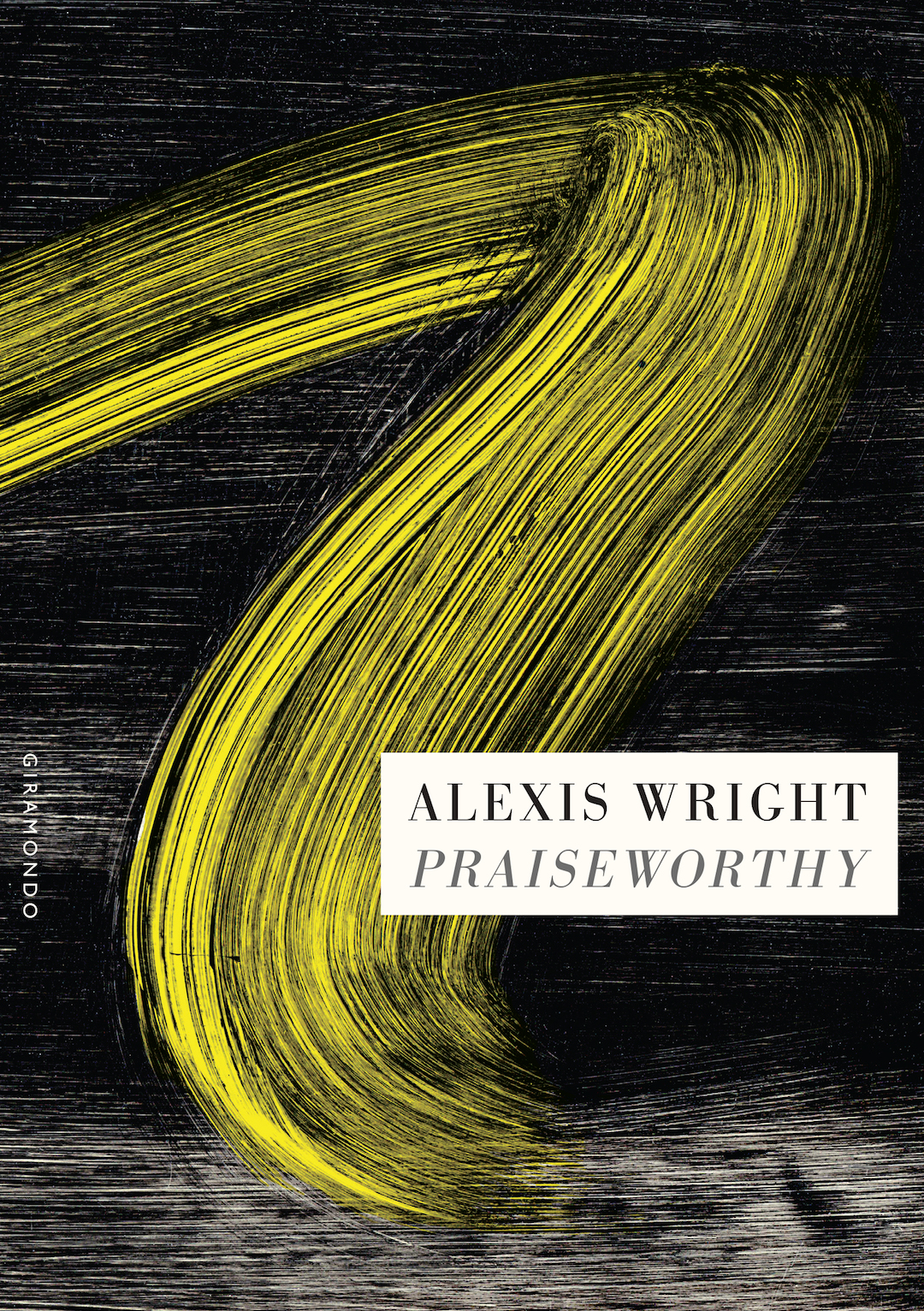
- Free Article: No
- Contents Category: Fiction
- Review Article: Yes
- Article Title: The question of the future
- Article Subtitle: Alexis Wright’s expansive new work
- Online Only: No
- Custom Highlight Text:
An ochre-coloured haze has gathered permanently over the town of Praiseworthy somewhere in the Gulf country. It is composed of dust, soot, broken butterfly wings, memories, and grief – and it isn’t going anywhere. Meanwhile, on the ground, thousands of feral donkeys are being corralled into the town cemetery by an Indigenous leader called Cause Man Steel. Most call this man Planet because he is always banging on about the collapse of the planet.
- Article Hero Image (920px wide):

- Article Hero Image Caption: Alexis Wright (Alexis Wright (photograph by Vincent L. Long via Giramondo)
- Featured Image (400px * 250px):

- Alt Tag (Featured Image): Tony Hughes-d'Aeth reviews 'Praiseworthy' by Alexis Wright
- Book 1 Title: Praiseworthy
- Book 1 Biblio: Giramondo, $39.95 pb, 736 pp
- Book 1 Cover Small (400 x 600):

- Book 1 Cover (800 x 1200):

This is the scenario that comes tumbling into view in Alexis Wright’s latest monumental novel, Praiseworthy. It is a worthy, I will not say praiseworthy, successor to her earlier epics Carpentaria (2006) and The Swan Book (2013). It also works as a complement to her choral biography Tracker (2017), which told the story of ‘Tracker’ Tilmouth through multiple voices. Indeed, the donkey scheme in Praiseworthy alludes to one of Tilmouth’s more creative projects, which was to sell Australian camels to the Middle East. The wild superfluity of Tracker’s shimmering personality seems beautifully evoked in the baroque contours of Cause Man Steel, the hero of Praiseworthy. What unites Tracker and Praiseworthy is an irreverent reverence towards the audacity of their heroes. Both Tracker and Cause were royal pains in the arse, and that was their whole point. You could argue yourself blue in the face and they would always win, even if they ended up seemingly saying what you said to begin with. Their magic lay in the fact that when they won you didn’t lose. You might end up wondering what the hell you were going to do with all these donkeys, but that was always a distraction.
There is only one true enemy in Praiseworthy and Tracker, and that is assimilation. If you think you know what assimilation is, you should read Praiseworthy and think again. In the world of Wright’s fiction, we see the many faces of assimilation. The anatomisation of assimilation is also central to the literary projects of Kim Scott, Alison Whittaker, and Evelyn Araluen. Within Indigenous critique, assimilation occupies the position that capital has in Marxism. Assimilation exists as a permanent demand that hystericises settler society as much as it sends Indigenous Australians scurrying this way and that. In its most innocuous guise, assimilation is simply what is socially good – what is praiseworthy. In that sense, being good is assimilation. But half the time, being bad is also assimilation. More fundamentally, for Wright, assimilation is the question of the future – futurity as such. This is why the question of assimilation directly connects to climate change and environmental destruction in Wright’s work. The real question in assimilation is always, what time are we in? One comes out of a Wright novel with one’s basic temporality wobbling on its pegs.
In the town of Praiseworthy, there is an anaemic enterprising Indigenous ‘Major Mayor’ who is the most immediate face of contemporary assimilation. He works hand in hand with the Australian government to develop a better future, close the gap, deliver outcomes and so on. He becomes so white and translucent that he is called Major Mayor Ice-Pick. In the mythology of the novel, he had been a regular Indigenous person but had sucked in too much of the hovering grief haze that he forgot who he was and became a white ghost instead. While the novel is scathing about his contortions and doublespeak, if you have read any of Wright’s work you will realise that there is plenty of derision to go around. The townsfolk of Praiseworthy are certainly not the repository of any conventional form of wisdom, though they are deft in coining nicknames. They are by turns recalcitrant naysayers, self-interested busybodies, and gullible hypocrites ready to join the latest evangelical megachurch. There are many would-be prophets and Messianic figures in Wright’s work, but they always end up looking ridiculous or pitiable. In Praiseworthy, the donkeys evoke both Jesus Christ and Sancho Panza. Indeed, the relationship of the narrator to the hero is essentially the relationship of Sancho to Don Quixote.
One of the joys of reading Wright is the wry exasperation that permeates the narrator’s voice. Praiseworthy’s narration is a sustained rant that calls to mind the work of Thomas Bernhard or the quiet rage of Dostoyevsky. But as with the work of these great writers, there is always a gleam in the novel’s eye that causes the story to hover between tragedy and farce. This undecidability is the symptom of the scale of the novel’s address. Wright is that rare thing in Australian writing: a writer of political reality. Her subject is Indigenous political reality and it comes from her own lived experience of decades of doing what Alison Whittaker calls Blakwork. At this level, there is no real distinction between Wright’s fiction and non-fiction. But what her fiction does is enter the dramatic domain of allegory. That single figures – Cause Man Steel in Praiseworthy or Oblivia Ethylene in The Swan Book – are made to carry the weight of epochal historical forces is at the same time preposterous and sublime. But Wright’s novels continually draw us back from these two impasses. Against absurdity and the numinous, Wright interposes reality. Obviously, this is not the workaday realism that claims to speak for everyday life in the Western tradition, but a fundamental political reality that only allegory seems able to name.
What Wright does is to dramatically expand the political domain by grounding it in Indigenous cosmology. The animistic immanence of Indigenous Country emerges, in Wright’s writing, as the ground of politics. It remembers, it knows, and it bides its time. Yet, along with the expansion of political franchise into realms that Western secularism brackets off as metaphysical, there is also the curious fact that the spirits in Wright’s novels are often rather indifferent. They sometimes scratch their heads at the latest human folly, but little seems to shake their equanimity. You get the feeling they have better things to do than look after needy humans.
At the other end, in Praiseworthy you find that the whole of Indigenous political reality is made to balance on the fulcrum of an acrimonious marriage. What is Dance meant to do with Cause? Here is the welding point in the whole allegory, where the epic contest of forces finds itself wedged into the painful silence of two people who can no longer talk to each other. That Dance has married Cause seems to speak to a primary dimension of Indigenous being. Indeed, the relationship of dance to causation was the animating question in Kim Scott’s novel That Deadman Dance. In Wright’s Praiseworthy, we see this dialectic enacted once again.
Praiseworthy blew me away. If one wants to feel the grit of Indigenous sovereignty, or to see it working in its most unassimilable and joyously maddening forms, then Wright’s new novel offers that possibility. It is a novel that runs rings around the mincing discourses of reconciliation. It seems to casually hold the whole universe in the teasing circularity of its incantations. The novel also introduces an inflexion point in the political basis of the Australian polity by proposing a new ethics founded on the refusal of assimilation. This is what Hegel called the negation of a negation (insofar as assimilation negates Indigenous life). And, as in Hegel, in Wright the negation of a negation is not nothing. From the denial of assimilation’s denial, Wright’s novel spins a precious filament of hope that persistently tugs survival into sovereignty.


Comments powered by CComment